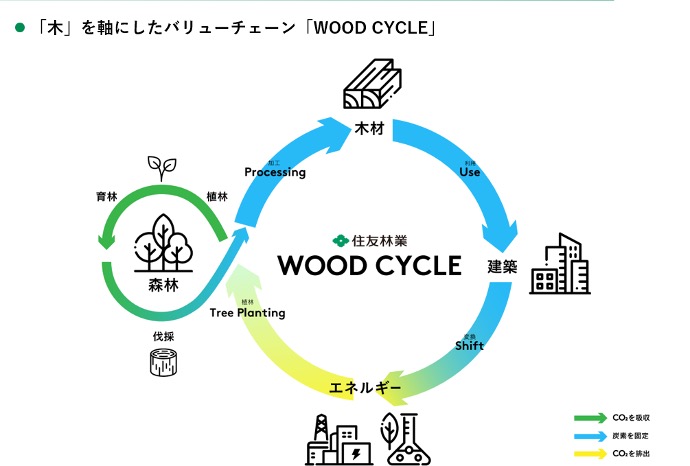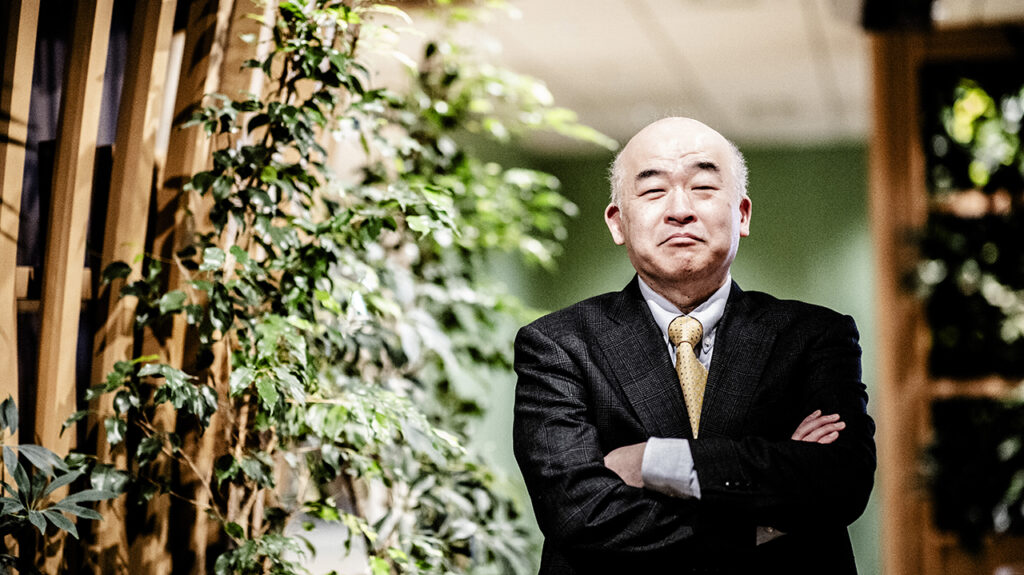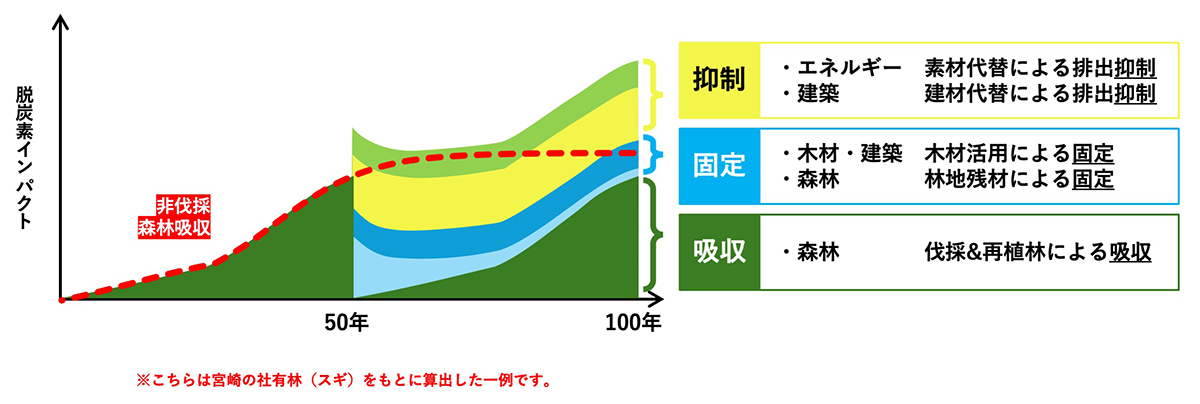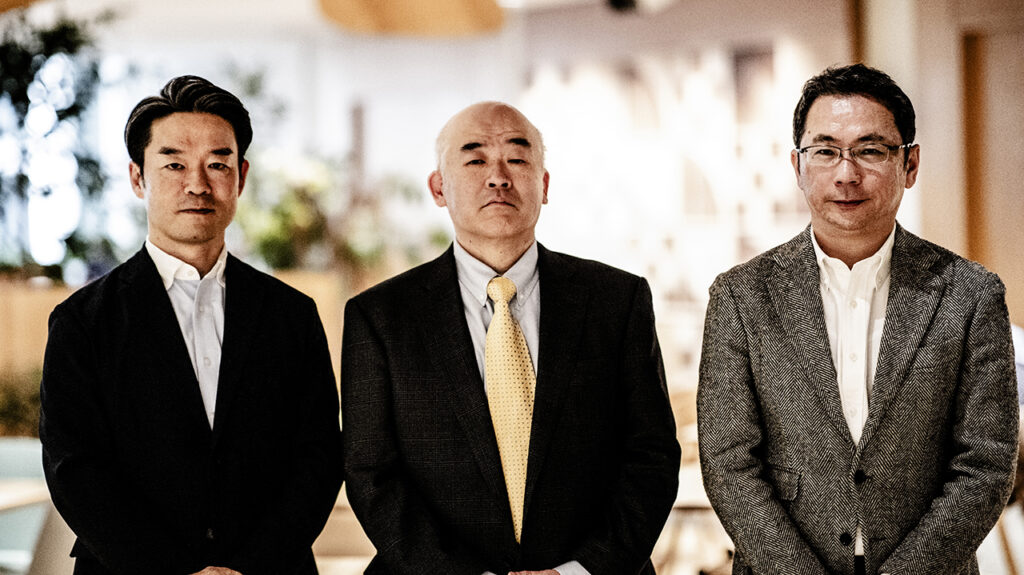Forestry Revival Aimed at by Enhancing the Wood Cycle
Updated by Sumitomo Forestry Co.
Sumitomo Forestry Co.
Headquartered in Tokyo (Chiyoda-ku, Tokyo), founded in 1691 (Genroku 4). Timber and building materials business (procurement, manufacturing, processing, and sales of timber and building materials, etc.), housing business (contracting, after-sales maintenance, renovation, and sales of detached and multi-family housing, real estate leasing, management, sales, and brokerage, and contracting for home exterior and landscaping work), construction and real estate business (overseas sales of detached houses for sale, contracting for construction of detached houses, development of multi-family housing and commercial complexes, and contracting for medium- and large-scale construction work in Japan) The main businesses of the Company are the construction and real estate business (sales of houses for sale overseas, contracting for construction of detached houses, development of apartment complexes and commercial complexes, contracting for medium- to large-scale construction work in Japan, etc.), the resource and environment business (forest resources business, renewable energy business, etc.), and the lifestyle service business (operation of fee-based nursing homes for the elderly with nursing care, insurance agency business, etc.).Official Site
Sumitomo Forestry is globally expanding its business centered on trees, from forest management to the manufacture and distribution of timber building materials, contracting for detached houses and medium- to large-scale wooden structures, real estate development, and wood biomass power generation. The company is now taking the next big step toward the revitalization of the forestry industry.
Sumitomo Forestry's mission and core business for the future is the "WOOD CYCLE" concept.

This is an expression of our value chain, which we announced in our long-term vision for 2022, Mission TREEING 2030. We will contribute to a decarbonized society by turning the wood cycle, that is, by increasing CO2 absorption in forests, promoting carbon fixation in wood, and fixing carbon over the long term through wooden construction. Through this entire project, we will contribute to CO2 absorption and fixation not only by our own company but also by society as a whole."
This is the view of Hiroyuki Miyazaki, General Manager of the New Business Development Department, who is driving new developments centered on the wood cycle. The new businesses include SAF (Sustainable Aviation Fuel), an alternative to petroleum-based aviation fuel, and biorefineries that utilize wood residues, such as biomass raw materials that can replace naphtha in the manufacture of chemical products. The company is also expanding into biorefineries that utilize wood residues, such as SAF (Sustainable Aviation Fuel) as an alternative to petroleum-based aviation fuel and biomass raw materials that can replace naphtha in the manufacture of chemicals.

In the future, we are aiming to link with other divisions, including the manufacturing division, to manufacture adhesives used in particleboard and plywood production lines, chemical products including fuels made from the residues, and power generation from the burning of the residues. We are promoting a "timber industrial complex" based on the premise of cascading use of timber to thoroughly and effectively utilize forest resources.
The effects of these future visions are visualized as "decarbonization impact*. In general, forests are considered to absorb and fix CO2, and cutting them down is considered a negative step in terms of global warming countermeasures. However, it is known that the degree of absorption actually decreases as old trees reach a certain age. In the case of cedar trees in Miyazaki Prefecture, it is more likely to contribute to decarbonization if the trees are cut down after 50 years, actively utilized, and then reforested. The decarbonization impact is a kind of conceptual diagram that illustrates this, and was calculated based on the vast amount of data accumulated by our company, which is developing its forestry business on a global scale.
*Decarbonization impact = absorption (CO2 absorption by forests) + fixation (carbon fixation by wood) + curtailment (emission curtailment by substitution)

According to the report, the cascade use of timber obtained through logging and reforestation has a greater decarbonization impact at the time of logging than the case in which existing forests are retained without logging (red line in the graph). Of course, there are individual differences in the timing of logging and reforestation and the actual use of the timber, and the avoided CO2 emission effects of building substitution (yellow area in the graph) and fuel substitution (green area in the graph) are calculated and accumulated from both cases, and are not without room for debate. However, the evaluation made in collaboration with the Kikuchi Laboratory of the University of Tokyo's Graduate School of Engineering (Chemical Systems Engineering, Graduate School of Engineering) has been received with reasonable confidence, and there are high expectations for support of the company's vision and offers of alliances.
Should forests be logged or not? ...... This point is not uniformly viewed not only from the perspective of the circular economy, but also from the perspective of nature positivity, i.e., biodiversity. For our part, we would like to fulfill our mission from a broad perspective, valuing the unique strengths of our company, in which all our businesses are linked with forests at the core. As part of this effort, in January 2024, we established a joint venture with Sumitomo Mitsui Trust Bank, Ltd.Japan Forest Asset Co.It's a "yes."
The company's business scheme involves the acquisition of land in Japan where logging has been completed and reforestation of 3,000 hectares will be realized by 2030. The company will purchase small, inefficient forests owned by individuals and digitally manage them together, thereby upcycling them into rational and economically viable forests that are also biodiversity-friendly.
In other words, this is an unprecedented attempt at forestry x finance, and in the future we are considering the management of a forestry fund utilizing J-credits. We believe that we can contribute to local employment and the local economy by using the invested funds for reforestation and afforestation to nurture healthy forests, and by working with local forestry cooperatives for operations and management."
In November 2023, as the first phase of the timber complex, the company will join with other companies to establish theKikan-no Mori Co.(the "Company") was established. The company will build a new factory in Iwaki City, Fukushima Prefecture, to manufacture lumber and processed wood products, mainly from Japanese cedar, and aims to start operations in March 2026. Kikan-no Mori Co., Ltd. aims to actively promote the use of domestic timber for housing components, of which a high percentage is made from imported timber, and to increase the ratio of such materials.
The period of carbon fixation by wooden construction is long, and its further spread is a key to prevent global warming. In this regard, we intend to promote the construction of medium- to large-sized commercial buildings.

Speaking on his behalf is Michihiro Hosono, Group Manager of the Medium and Large Scale Wood Construction Strategy and Development Group and Planning Group in the New Business Development Department (above left. Mr. Miyazaki is in the center, and Kentaro Yamamoto, Group Manager of the Business Strategy Group, is on the right).
First of all, we would like to increase the demand for wooden structures in commercial buildings, especially non-residential buildings, where the percentage of wooden structures is low, and then we would like to stimulate demand for domestic lumber. To this end, we must cultivate the market for medium- to large-scale buildings of up to 3,000 m2, three to four stories in size, taking fireproofing standards and market size into consideration. In addition to the creation of a system and structure, we must also develop technology and accumulate actual projects, which are the four most important points.
In terms of system development, it is important to resolve the shortage of designers and builders; in terms of system development, it is important to standardize and rationalize materials suitable for medium- and large-scale projects; and in terms of technology, it is important to develop fire-resistant and earthquake-resistant structures, but it is also necessary to change the way of thinking.
In the case of medium- to large-scale wood-frame buildings, there are many "one-of-a-kind" landmark buildings that fit well with the SDGs and carbon neutrality. While this is very effective in driving market awareness, the suitability of wood construction tends to be a low priority. As a result, the design, procurement, and construction processes are time-consuming and labor-intensive, the construction costs are naturally enormous, and there is little reproducibility in other projects. It would be a real shame if a landmark construction project leads to an excessive impression that wooden structures are difficult and expensive. Instead, by standardizing the design, materials, and supply chain to some extent, we can make it easier to build medium- to large-scale wooden buildings of three to four stories in various ways. If we can stimulate demand for timber widely in this way, we believe the benefits will increase in terms of the utilization of domestic timber, the revival of the domestic forestry industry, and the long-term sequestration of CO2 as carbon dioxide.
He also said it is important to increase the number of actual projects in order to expand the market. The choice of medium- to large-scale wooden structures is still not common," he said. To this end, the company is currently working on a number of projects, including apartment complexes, nursing care facilities, and accommodations that are expected to meet inbound demand, as well as a "wood building" project that won an award for excellence in a wood use contest for its excellent acoustics.Toho Gakuen Munetsugu HallThe company has been steadily accumulating examples of implementation of its products, including the "one-of-a-kind" wooden structures that are landmarks. At the same time, the company has not forgotten its diverse development activities, such as medium- to long-term technological development, accumulation of evidence on cost, and attention to landmark "one-of-a-kind" wooden structures.
We have high expectations for the Platinum Forest Industry Initiative," said Mr. Kato. "We hope that the Initiative will provide a forum for companies that share our mission to exchange ideas, sometimes in friendly competition, which will lead to new insights, and of course, provide opportunities for alliances and collaboration on an ongoing basis. I believe that this will help us to expand our diverse efforts. It would be wonderful if this could create a platform where all participants, including our various initiatives, can realize great social value.
At the end of the interview, Mr. Miyazaki's enthusiasm for Sumitomo Forestry's future revitalization of the forestry industry was as strong as ever.
The book of the same title as this web media, "Forest Circular Economy" (edited by Hiroshi Komiyama) was published by Heibonsha on August 5, 2025. The book proposes a redesign of the economy, institutions, and local communities based on the three pillars of biomass chemistry, wooden cities, and forestry innovation in the cycle of "cutting, using, planting, and nurturing" forests. This practical book provides a point of contact between concepts and examples for those involved in policy making, social implementation, and the creation of businesses that make use of local resources.
View on Amazon